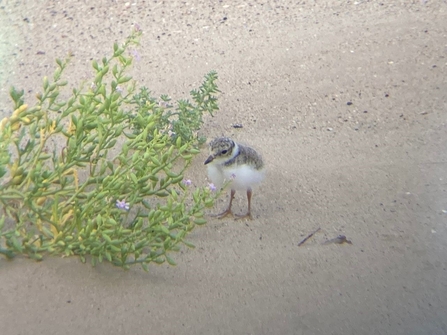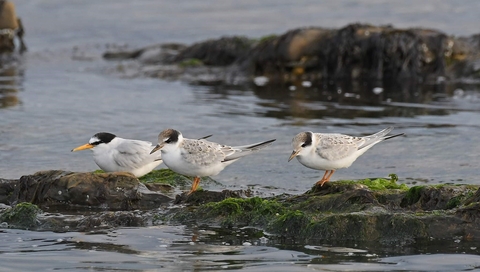Well, here it is...our final blog of the 2022 little tern season here at Seaton Carew - and what a great season it has been! Huge thanks and recognition go to the incredible volunteers, Durham Wildlife Trust wardens and, of course, to the good people of SeaScapes, the National Lottery Heritage Fund, Hartlepool Council and Durham Wildlife Trust who, through their commitment, coordination, support and generosity have made this all possible.
Everyone has devoted so much time and effort to the success of this project, for the sole reward of seeing Seaton’s little terns raise their young and make ready for the long return trip back to West Africa. I make no apology for describing them as 'Seaton’s little terns', this definition includes all of those members of the public who have taken so much interest and been so respectful of the site. You all share in the success and should feel the same pride in what we have achieved here together. Here is just a taster.
So, what does success look like? I guess the ultimate measure is in whether our little terns were able to raise their young, to fledge and then to depart for their homes in The Gambia. In that respect, I am delighted to report that we have a total confirmed count of 87 chicks, although the actual total is expected to be even higher. Counting the number of chicks has been a challenge as they are only brooded in the nest for three days or so, after which, they’re OFF with mum and dad in quick pursuit!! So, the 87 we registered were limited to those cooperative chicks who peeked out from beneath mum just as the warden did their daily counts.
Of those chicks, our licensed bird ringer Chris, has successfully ringed 67.
The ringing will enable the authorities to track the journeys and whereabouts of our little terns. And in that respect an interesting fact has emerged from this year’s reports. Two of our birds were found to have been ringed in 2003 and 2007 and are aged 19 and 16 years respectively!
With an annual round trip of some 7000 miles each, that’s just under a quarter of a million miles travelled between them!
As an added bonus, our protected little tern site has also become a safe haven for other wildlife, such as ringed plovers and their countless chicks which seem to pop up from nowhere and proceed to scamper non-stop around the site. Don’t these chicks ever sleep so that we can count them?
The site has also provided a safe roost for other seabirds at times when there’s been no room at the waterside inn. Oystercatchers, dunlin, turnstones and others have all popped in. We’ve even had regular visits from bats to keep our night shift wardens amused during lulls between fox activity, and (in these circumstances) some less welcome visitors in the shape of a weasel and a barn owl.







